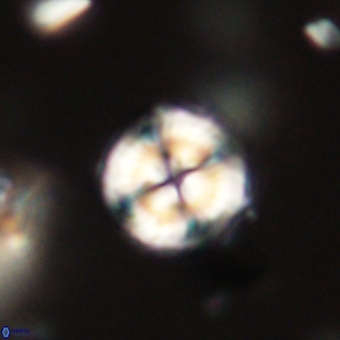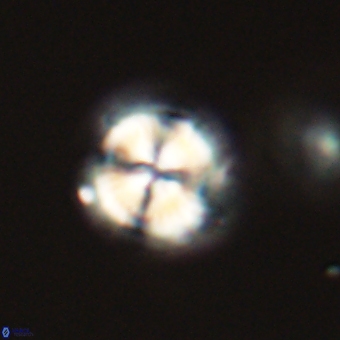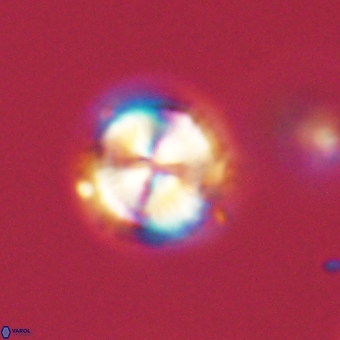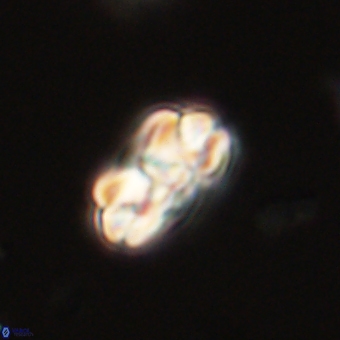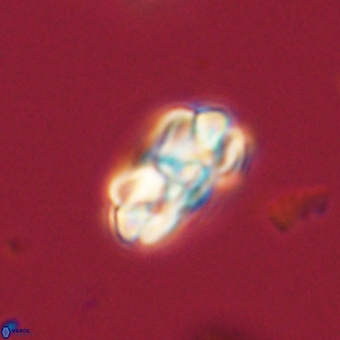Mauriceblackia katejacovidesiae
Set number: 1724
-
1
-
2
-
3
-
4
-
5
-
6
-
7
-
8
-
9
-
10
-
11
-
12
-
13
-
14
-
15
-
16
-
17
-
18
-
19
-
20
-
21
-
22
-
23
-
24
10µm
Holotype, In the mobile mount
Mauriceblackia katejacovidesiae Varol, 2025
Circular species of Mauriceblackia exhibit a closed central area surrounded by a protruding tube cycle. The proximal shield is slightly narrower than the distal shield.
In honour of Kate Jacovides, Cambridge, United Kingdom.
Diameter of distal shield = 7.43 μm; Diameter of proximal shield = 6.82 μm; Width of tube cycle = 5.53 μm; Protruding part height of tube cycle = 1.34 μm; Thickness = 3.82 μm.
Optical Properties: In the plan view, the tube cycle and proximal shield display inclined extinction lines and length-fast (-) elongations, whereas the distal shield shows constant extinction (with the optic axis vertical relative to the microscope stage). Extinction lines on the tube cycle and proximal shield are laevogyre (left-handed) distally and dextrogyre (right-handed) proximally. The typical extinction angle is about 55-65° on the shield and 45-55° on the tube cycle on the distal side. The interference colours on the tube cycle appear as first-order yellow, while on the proximal shield, they appear white.
Mauriceblackia katejacovidesiae differs from Mauriceblackia media in having a closed central area, whereas the latter has an open central area.
Bown, P. R. 2016. Paleocene calcareous nannofossils from Tanzania (TDP sites 19, 27 and 38). Journal of Nannoplankton Research. 36(1): 1-32.
Varol, O. 2023. New paleocene calcareous nannofossils: Carlamuelleria, Davidbukrya, Mauriceblackia, Noelia and Senelia. Marine Micropaleontology. 180: 1-41.
Varol, O. 2025a. A practical guide to optical studies of calcareous nannofossils. Grzybowski Foundation Special Publication. 29: 1-222

